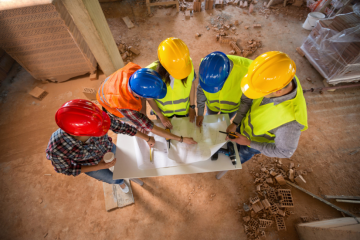Tree trimming may seem to be an easy weekend task, but if done poorly, it could harm your trees, your property, or even you. Tree trimming around your house needs preparation, skill, and the right tools, whether you’re updating your landscape or removing dead limbs.
Before you grab your pruning scissors, we’ll take you through some safe procedures that every homeowner should be aware of. You can save time and prevent injuries by understanding which home tree trimming activities are best left to experts and which can be done safely by yourself.
Why Tree Trimming Matters
The secret to a lovely lawn is routine upkeep. Making the lawn seem neat isn’t the only reason for home tree trimming. It fulfils a number of crucial functions:
Health: Your tree will flourish if you remove any dead, diseased, or insect-infested limbs.
Safety: By trimming, you lower the chance that falling branches will harm your house or cause harm to someone.
Growth control: Smart pruning promotes both fast growth and improved shape.
Curb appeal: A well-maintained tree can change your lawn’s overall appearance.
Ideal Time to Trim Trees
You might be surprised to learn how important timing is. The best time to trim most trees is in late winter or early spring, when they are dormant, but some gentle pruning can be done at any time of year. This reduces the tree’s stress and the chance that pests or diseases may spread.
- Flowering trees should be clipped immediately after blooming.
- Early summer is the ideal time to trim evergreens.
- Infectious, hanging branches should be cut off as soon as they are discovered.
Safety Tools You’ll Need
Tree trimming can be dangerous if you don’t have the right equipment and safety gear. Before beginning, ensure that you have:
- Protective goggles and gloves
- Hard head cap
- Clothing with long sleeves
- A pole saw, loppers, or pruning shears
- A ladder while being observed by someone
- Chainsaw only for larger limbs
Never try to chop limbs close to power lines or climb a tree while carrying tools. A qualified arborist should be contacted if anything appears dangerous.
When to Call for Expert Help
Basic home tree trimming is something you can do yourself, particularly if you’re working with young trees, little branches, or bushes. But you ought to work with an expert if:
- The limb is big, elevated, or close to a power line or other building.
- The tree has a disease or is rotting.
- You don’t know where or how to cut.
In addition to ensuring safety, professional arborists are familiar with tree biology, which prolongs the life and improves the appearance of your trees.
Post Tree Trimming Care
It’s important to thoroughly clean up after trimming:
- To avoid fungi and bugs, clear away all fallen branches and trash.
- Green wood attracts termites, so avoid stacking it next to your house.
- For moisture retention and root protection, mulch the waste.
Over the next few weeks, monitor your tree to make sure it’s recovering properly. See a tree care expert if you notice dying trees or insect activity.



